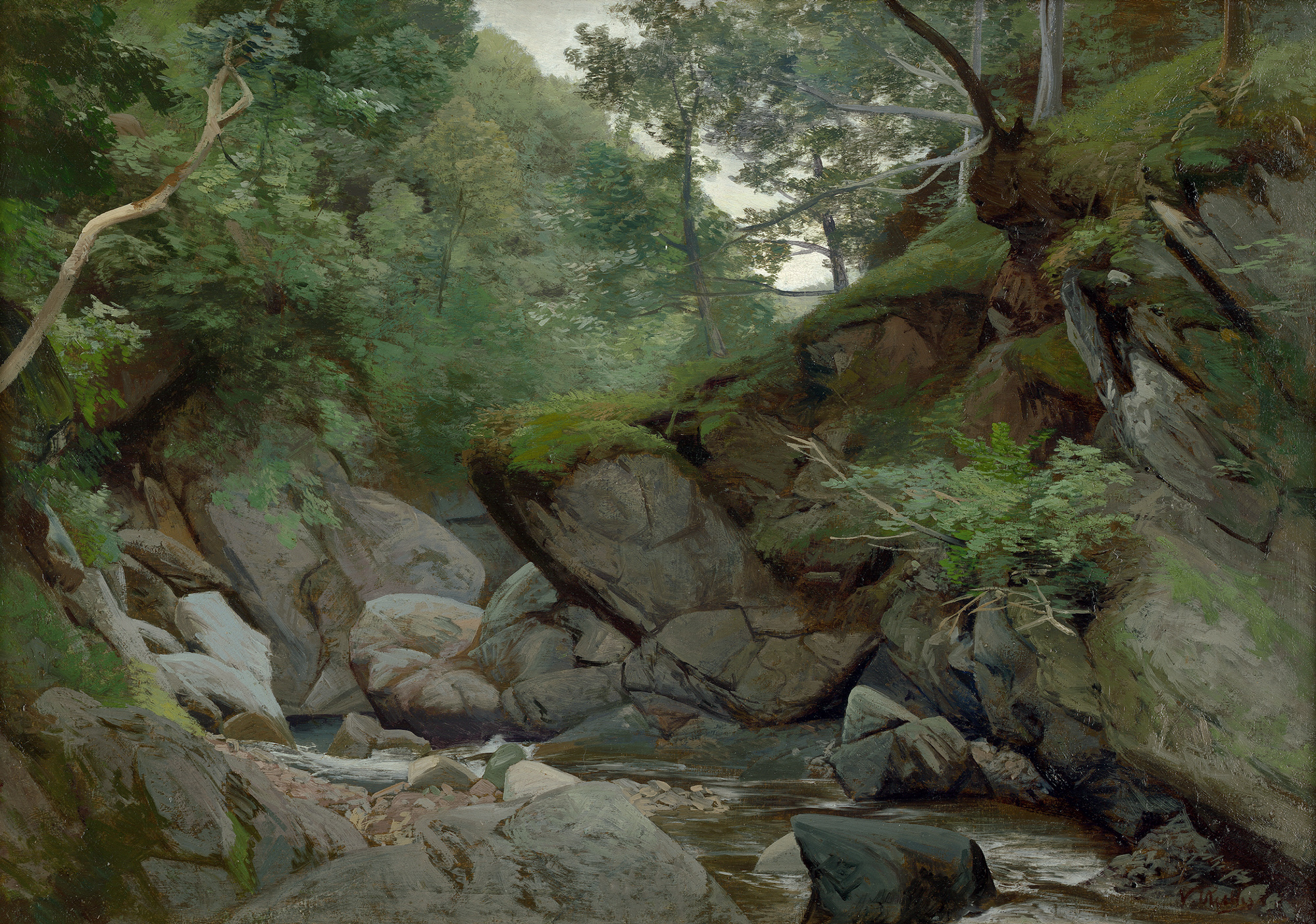Loading the page ...
Valentin Ruths
(1825–1905, Hamburg)
Woodland Gorge. Oil on cardboard, mounted on wood. 37 x 53 cm. Signed “V. Ruths”; entitled and signed “Waldschlucht. Valentin Ruths” in pen and black ink on a label on the verso. Ca. 1874/77.
None other than Alfred Lichtwark, who headed the Hamburger Kunsthalle from 1886 to 1914, during which time he was one of the most fervent advocates of Modernism in Germany, described Valentin Ruths as “the foremost Hamburg landscape painter” of his time (Rudolf Leppien. Kunst ins Leben. Alfred Lichtwarks Wirken für die Kunsthalle und Hamburg von 1886 bis 1914. Hamburg 1987, p. 68). The present study after nature provides a vivid illustration of Ruths’ formidable talent in this field. The remarkable freshness and immediacy of this observation of nature make it a perfect example of a paysage intime, a pictorial genre practised in France at about the same time by artists from the Barbizon School. In north Germany Ruths ranks among the pioneers of a new, naturalistic approach to landscape which is clearly distinguished from the pictorial world of the Romantic School by its choice of modest, unpretentious subjects. The accurate, lifelike rendering of such fleeting phenomena as light and atmosphere becomes the overriding design principle in his painting. Fully in keeping with his Hanseatic background, Ruths first completed a business apprenticeship and then worked as a lithographer. In 1846 he enrolled at the Munich Academy but the revolutionary upheavals there in 1848 forced him to interrupt his studies. In 1850 Ruths continued his training under the eminent landscape painter, Johann Wilhelm Schirmer, in Düsseldorf where he received considerable inspiration. After spending two years studying in Rome (1855–57), Ruths finally set up as a freelance artist in Hamburg in 1857. One of his preferred subjects was the landscape of the River Elbe in his native surroundings, although landscape motifs from Italy and Switzerland also played a significant role in his painting. The sensitivity to colours and the technical virtuosity of his nature studies brought him great acclaim from his contemporaries. In contrast to his fellow artists at the Barbizon School in France, who preferred a thick application of colours, Ruths’ treatment in our picture is smoother and the glaze has an enamel-like lustre. The artist dispenses completely with any genre accessories and staffage figures. The picture derives its appeal solely from the chromatic charm of the fresh, subtly gradated green, grey and brown tones and the virtuoso rendering of the cool, silvery light. The astonishing truthfulness to life and the consummate quality of the painting evoke an image of nature that is of timeless beauty.
Exhibition: Ruths-Ausstellung. Hamburg, Kunstverein in der Kunsthalle, 1896, Cat. no. 67 or 74.
Literature: F. von Boetticher. Malerwerke des 19. Jahrhunderts. Dresden 1901 (reprint Leipzig 1944), vol. II, p. 501, no. 99 or
p. 502, no. 113.
